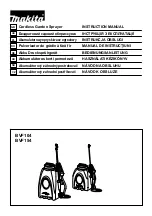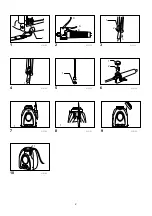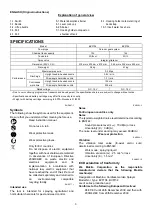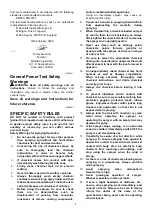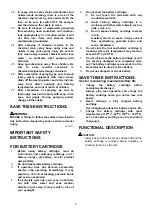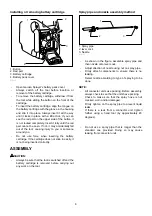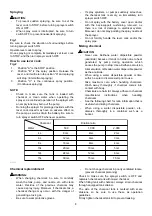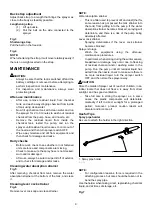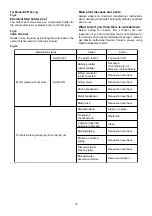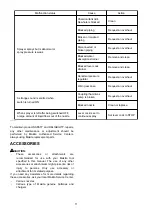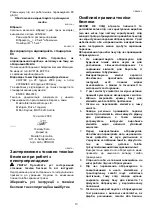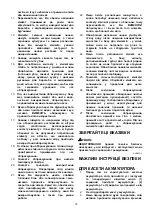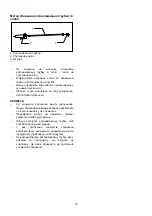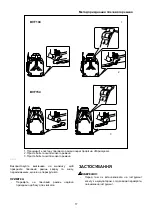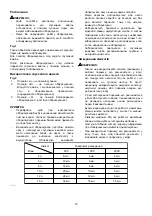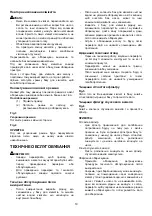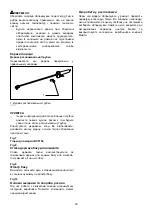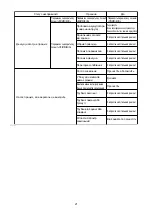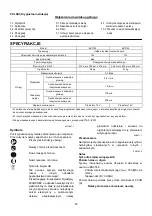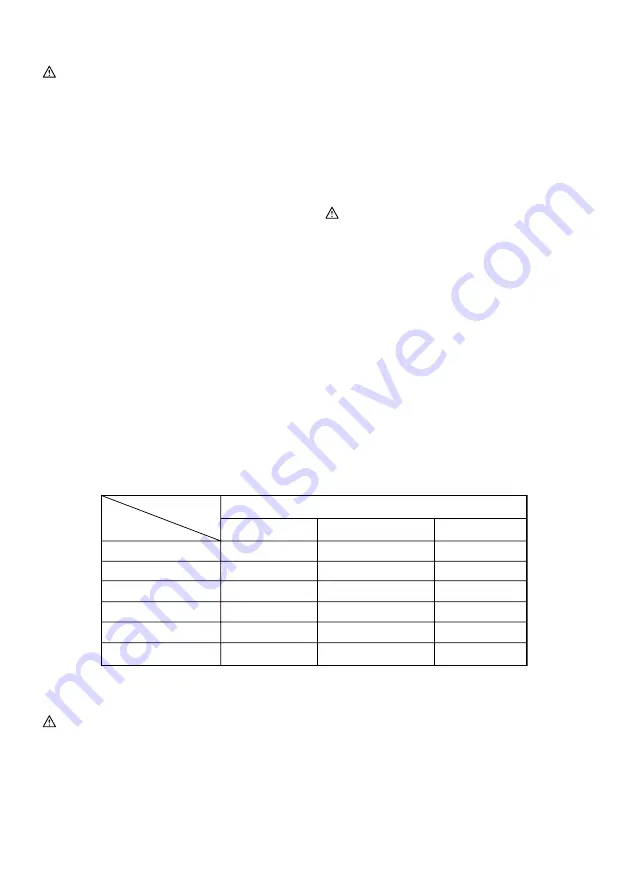
8
Spraying
CAUTION:
•
To prevent sudden spraying, be sure to set the
lever cock to STOP, before turning sprayer switch
ON or OFF.
•
When spray work is interrupted, be sure to turn
switch OFF, to prevent inadvertent spraying.
Fig.1
Be sure to check the situation of surroundings before
turning sprayer switch ON.
Operate lever cock to spray.
Once spraying is complete, immediately set lever cock
to STOP, and then turn sprayer switch OFF.
How to use lever cock
Fig.2
1.
Position "A" is the STOP position.
2. Position "B" is the spray position. Release the
lever, and it will return to position "A" and spraying
will stop. (Intermittent spraying)
3. Position "C" is the continuous spray position.
(Continuous spraying)
NOTE:
•
Check to make sure the tank is loaded with
chemical or clean water when operating the
sprayer, as continued operation of the sprayer with
an empty tank may burn out the pump.
•
Running the sprayer for prolonged periods with the
lever cock closed may have an adverse effect on
the pump as well as drain the battery. Be sure to
turn sprayer switch OFF whenever possible.
•
If spray splutters, or pumps suddenly screeches,
the chemical tank is empty, so immediately turn
sprayer switch OFF.
•
Do not spray with the battery cover open and/or
with the back-support cushioning removed, as
there is a risk of damage to electrical system.
Moreover, do not spray pointing the spray nozzle at
the sprayer.
•
Do not forcibly handle the lever cock and/or the
spray pipe.
Mixing chemical
CAUTION:
•
Never use Kelthane water dispersible powder
(acaricide) because it tends to harden due to heat
generated by pump during operation, which
causes the pump to stop. Use a Kelthane emulsion,
Akar emulsion or Osadan water dispersible powder
as the acaricide.
•
When using a water dispersible powder or lime
sulfur, be sure to dissolve well prior to use.
•
Take maximum care when handling chemicals.
Wash away thoroughly if chemical comes into
contact with body.
•
Chemicals are harmful. Always adhere to chemical
manufacturer instructions when handling
chemicals.
•
See the following chart for ratio information that is
useful when diluting chemicals.
•
When using a water dispersible powder, etc.,
dissolve thoroughly in a container such as a
bucket.
Chemical
Water
Dilution ratio
4L
6L
8L
10L
12L
15L
500
1,000
2,000
8mL
12mL
16mL
20mL
24mL
30mL
4mL
6mL
8mL
10mL
12mL
15mL
2mL
3mL
4mL
5mL
6mL
7.5mL
010148
Chemical replenishment
WARNING:
•
When changing chemical, be sure to carefully
wash the tank, pump, and nozzle, etc. with clean
water. Residue of the previous chemical may
cause a spray injury. Moreover, if chemicals mix, a
chemical change may occur, with the danger of
generating a toxic gas.
•
Be sure to wear protective gloves.
•
Do not change chemical in poorly ventilated locale.
(prevent chemical poisoning)
Check to make sure the sprayer switch is OFF and
replenish chemical tank with mixed chemical.
When filling tank with chemical, always strain chemical
through equipped tank strainer.
The side of the chemical tank is marked with scale
divisions, so be sure to use these as operation
guidelines.
Firmly tighten chemical tank lid to prevent leaking.

